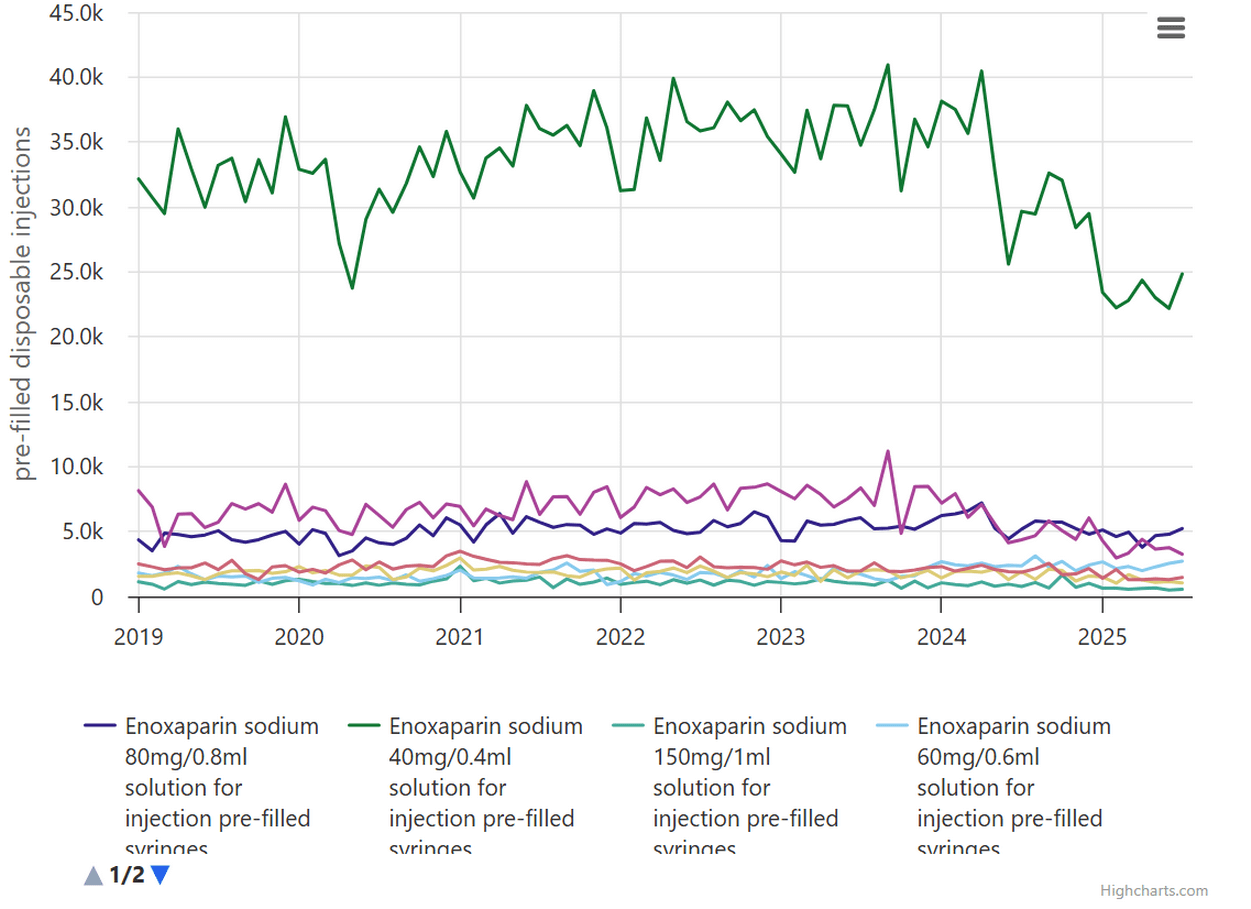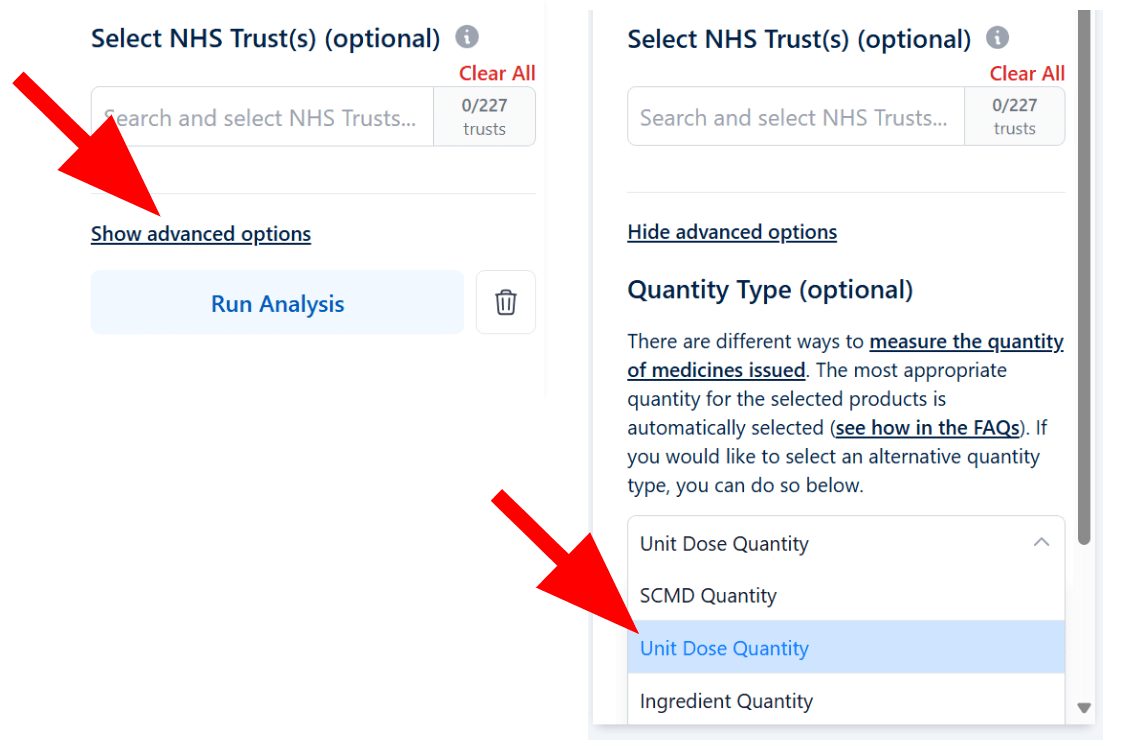Measuring anticoagulant use in secondary care using OpenPrescribing Hospitals: Part 1
- Posted:
- Written by:
- Categories:

This article is part of a series: Anticoagulant Use in NHS Hospitals in England
- Measuring anticoagulant use in secondary care using OpenPrescribing Hospitals: Part 1
- Measuring anticoagulant use in secondary care using OpenPrescribing Hospitals: Part 2
- Measuring anticoagulant use in secondary care using OpenPrescribing Hospitals: Part 3
In this 3 part blog series, Vicky Speed, clinical informatician at the Bennett Institute and specialist anticoagulation pharmacist at King’s College Hospital in London describes how OpenPrescribing Hospitals can be used to look at anticoagulant use in hospital trusts in England.
The blogs will describe analyses possible using OpenPrescribing Hospitals and tips for using the platform for:
- Low molecular weight heparin (LMWH)
- Direct oral anticoagulants
- Vitamin K antagonists
Part 1 - Low molecular weight heparin on OpenPrescribing Hospitals
Did you know? ~4 million prefilled syringes of LMWH are issued each month. 63% of LMWH issued in hospitals in England is enoxaparin. (OpenPrescribing Hospitals - July 2025)
What are low molecular weight heparins (LMWHs)?
Low molecular weight heparins belong to a group of medicines called anticoagulants (blood thinners). They are most commonly used to prevent and treat blood clots when patients are admitted to hospital (thromboprophylaxis), and are given to patients as an injection.
How much LMWH is used in hospitals in England?
In July 2025 alone, nearly 4 million pre-filled syringes of low molecular weight heparin were issued in NHS hospital trusts in England. There are three different low molecular weight heparins in regular use in the NHS in England (enoxaparin, dalteparin and tinzaparin). Using OpenPrescribing Hospitals you can create a custom analysis to see how much of each low molecular heparin was issued as pre-filled syringes looking back to 2019. We’ve written a guide on how to do this here. Or, to get started right away, use our pre-populated analysis link here.

How much of each strength of LMWH?
There are different strengths of LMWH products available (e.g enoxaparin 40mg, enoxaparin 20mg etc). Sometimes it is helpful to see how much of each strength of LMWH is used within an individual trust. The example below shows all enoxaparin pre-filled syringes issued at a single NHS trust. Usage of each strength of enoxaparin is reported in the table below for July 2025.


What about biosimilars?
Many LMWHs are issued as biosimilar products. Unfortunately we are not able to report the use of biosimilars in OpenPrescribing Hospitals. This is because the Secondary Care Medicines Data (SCMD), on which OpenPrescribing Hospitals is based, contains only ‘generic product level’ data (VMP in dm+d terms). No brand level data (AMP in dm+d terms) are available, and that includes biosimilars.
Why aren’t you using Defined Daily Dose (DDDs) to compare LMWH usage?
Warning - This is getting into the weeds…
When comparing different drugs at different strengths, it is usually recommended to use DDD as the quantity type. The World Health Organisation official DDDs for LMWH are given in international units based on anti Xa activity. However, the strength of some LMWHs such as enoxaparin, are defined in milligrams/grams in the SCMD, requiring additional work from us to add conversions. We have been working away to expand our DDD coverage within OpenPrescribing Hospitals and hope to include these in the future. We think pre-filled syringes are a great alternative as they are a well recognised unit for LMWH and for the majority of patients, the contents of one pre-filled syringe will be their dose.
Top tip for this analysis!
Counting the number of pre-filled syringes
One way to measure LMWH use is to count the number of pre-filled syringes (they are measured in ml in the raw data, so it’s difficult to compare the issuing of different strength LMWH).
In order to do this you need to select the Unit Dose quantity type. This is available on the custom analyse page on the analysis builder. On the analysis builder select show advanced options and select unit dose quantity.

Choosing a quantity type is important so that analyses are meaningful. On OpenPrescribing Hospitals we have tried to make this easier by recommending the quantity type based on the products selected. If you are interested in the detail - we’ve written this blog about how this works.
In the next blog, we will show how OpenPrescribing Hospitals can be used to look at DOAC prescribing. If you have any suggestions / comments / feedback for the platform OpenPrescribing Hospitals please get in touch at bennett@phc.ox.ac.uk.


